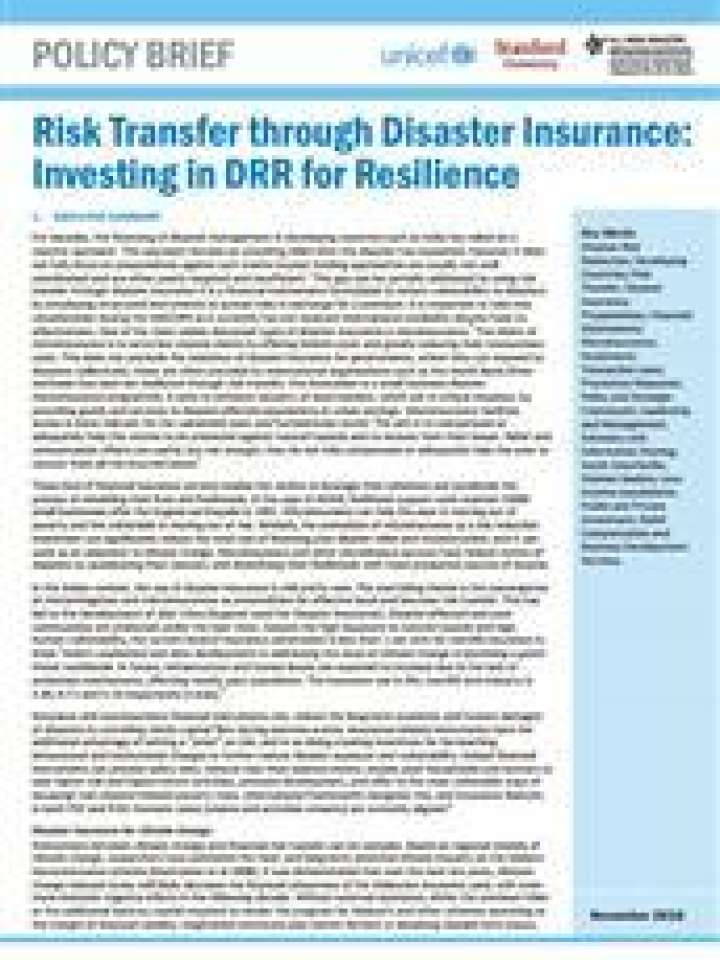Risk transfer through disaster insurance: Investing in DRR for resilience
This policy brief shows that risk transfer through disaster insurance requires a flexible national framework to allow for tailored solutions at the local level. The document calls for the countries and their humanitarian and development partners to urgently ensure that governments can provide disaster insurance. A future dialogue for authorities to be informed and inform national and regional plans should feature in the Asia Regional Implementation Plans, AMCDRR declaration, and disaster management plans and policies, and collect better data to monitor progress.
The reactive approach focuses on providing relief after the event of a disaster while making little provision for preparedness against such events. Such ex-post funding approaches are usually not well coordinated. Such a gap can be partially addressed by using risk transfer through disaster insurance, which are financial mechanisms formulated to reduce vulnerability to disaster by employing structured instruments to spread risks in exchange for a premium. Accordingly, this document details the following policy recommendations:
- National governments should support the growth of financial services such as microinsurance to help the poor meet their needs after disasters.
- National governments should recognise that microinsurance is not a panacea for disasters. There is a need to promote long-term disaster risk reduction in conjunction with microinsurance.
- National governments should promote the review of organisations' claims processes to ensure that money is getting to clients in the most effective and efficient possible way. This includes examination of services to help with claims, support for timely review of claims, and information management of decisions.
- National governments should encourage private and international financial institutions to increase the access of the poor and vulnerable to risk transfer measures like insurance.
- National governments should support disaster microinsurance organisation to reach an increased number of communities that require such products.
- National governments should provide increased understanding of the use of insurance funds as well monitoring of additional borrowing after disasters.
- National governments should promote increased participation by women in disaster microinsurance programmes.
- National government should utilize the client community to increase awareness and grow. Microinsurance organisations should work to create innovative ways to involve the community in outreach and awareness generation of disaster microinsurance.
- National governments should ensure that all are being served, by promoting the review of products. Ensure that although 'the poor' are being served, 'poorer than the poor' are not being excluded due to costs and information barriers.
This policy brief was prepared in advance to the Asia Ministerial Conference on Disaster Risk Reduction (AMCDRR), in India, 2-5 November 2016.
Explore further
